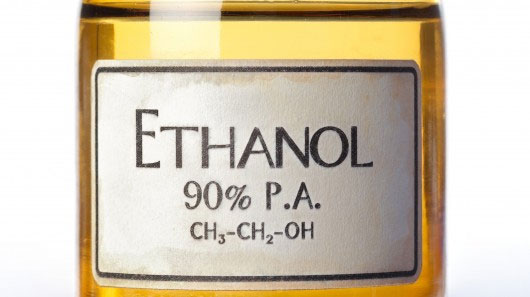Production of liquid ethanol from carbon monoxide (CO)
Ethanol or alcohol is considered a more environmentally friendly alternative fuel than fossil fuels except for its limitations. The common method of producing ethanol is fermenting sugar or cereals with alcoholic yeast. However, crops like corn (corn) often take time to harvest, occupy a lot of cultivation area and need a lot of water and fertilizer. Today, Stanford scientists have devised a way to produce liquid ethanol from carbon monoxide (CO).
This technology was developed by chemistry professor Matthew Kanan and graduate student Christana Li. While ethanol is extracted from fermentation, their technique uses saturated water with CO gas and places this solution in an electrochemical battery at room temperature.

Like other fuel cells, the CO-water battery has two positive and negative electrodes to rotate the current. In the case of hydrogen fuel cells, electric current can convert the battery-containing water into oxygen and hydrogen gas. By using cathode made from a copper oxide, Kanan and Li were able to reduce CO in water to ethanol and acetate.
With conventional copper cathodes, conversion efficiency is only about 1/10. Kanan explained: "Common copper electrodes contain stacked nanoparticles. The opposite copper oxide is made up of copper nanocrystals and all of them are joined together in a seamless grid with the boundaries are clearly defined ". This structure allows copper to use up to 57% of the current to produce ethanol and acetate according to Stanford and this is an impressive number.
However, it would be even better if the current used in the process could be derived from renewable energy sources and if CO could be derived from a greener source than fossil fuels. This is also what researchers are aiming at along with increasing process efficiency. They are also looking for ways to use technology to produce fuels other than ethanol.
- Australia is alert to tuna freshened with Carbon Monoxide
- Technological breakthrough production of carbon chip series
- Emissions from hazardous ethanol are no less than gasoline engines
- Magnet enhances the production of ethanol
- Japan has the technology to produce cheap fuel from straw
- Brazil began testing ethanol production from rice
- Detecting Carbon monoxide (CO) in hot air 10 million degrees Celsius
- Turn sunlight and air into liquid fuel
- Ethanol production from sliced cassava materials
- Ethanol from sorghum - breakthrough biofuel
- Carbon Monoxide - silent killer
- Find raw materials for Ethanol production plant
 Is the magnetic North Pole shift dangerous to humanity?
Is the magnetic North Pole shift dangerous to humanity? Washington legalizes the recycling of human bodies into fertilizer
Washington legalizes the recycling of human bodies into fertilizer Lightning stone - the mysterious guest
Lightning stone - the mysterious guest Stunned by the mysterious sunset, strange appearance
Stunned by the mysterious sunset, strange appearance